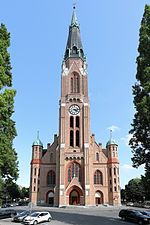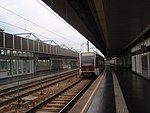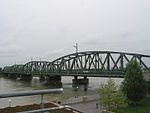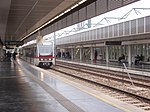Wien Floridsdorf railway station
Buildings and structures in FloridsdorfRailway stations in Austria opened in the 1960sRailway stations in ViennaRailway stations opened in 1961

Wien Floridsdorf (German for Vienna Floridsdorf) is a railway station located in the Floridsdorf district of Vienna, Austria. Opened in 1961, it is owned and operated by the Austrian Federal Railways (ÖBB), and is served by both regional and S-Bahn trains. Underneath the station is the Floridsdorf U-Bahn station, which is the northeastern terminus of U6 of the Vienna U-Bahn.
Excerpt from the Wikipedia article Wien Floridsdorf railway station (License: CC BY-SA 3.0, Authors, Images).Wien Floridsdorf railway station
Franz-Jonas-Platz, Vienna KG Floridsdorf (Floridsdorf)
Geographical coordinates (GPS) Address External links Nearby Places Show on map
Geographical coordinates (GPS)
| Latitude | Longitude |
|---|---|
| N 48.256388888889 ° | E 16.4 ° |
Address
Wien Floridsdorf
Franz-Jonas-Platz
1210 Vienna, KG Floridsdorf (Floridsdorf)
Austria
Open on Google Maps











